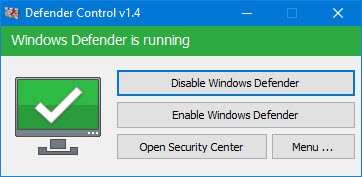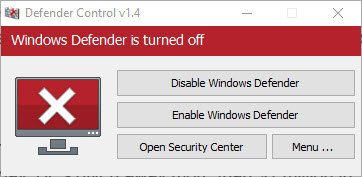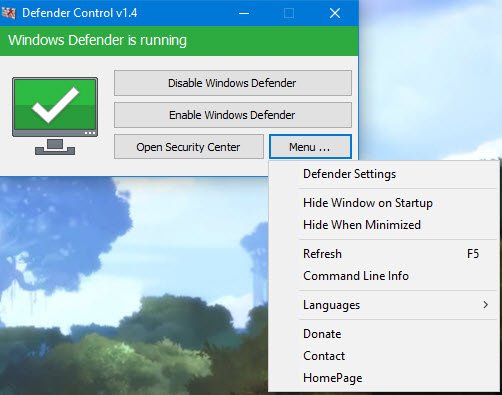Windows Defender is the default anti-virus and malware program in Windows 10, and for most users, it’s all they’ll ever need since it works great! However, some users might want to continue using their favorite third-party antivirus program, and that’s where they may want to disable Windows Defender permanently.
You see, whenever a person decides to replace one anti-virus tool in favor of another, the plan is to always disable the old and replace it completely with the new. This is done to make sure there are no conflicts, and that causes for better protection. In Windows 10, once the user has installed a third-party program, Windows Defender automatically disables itself. But it does run in the background and consume resources. If you do not want this happening, you can completely disable Windows Defender.
Disable Windows Defender permanently using Defender Control
On Windows 11/10/8 you cannot turn off Windows Defender completely anymore. You might then be wondering if there’s an easy way to disable Windows Defender without having to go through a lot of hoops to disable Windows Defender.
Well, Defender Control is a free portable tool that can completely disable Windows Defender. Everything about it so far is easy to use and easy to understand. Therefore, anyone should be able to take advantage of what it has to offer.
Why you may want to use it:
- While copying large files, disabling Windows Defender could decrease the total Copy time
- Useful if you experience conflicts with your antivirus application
- Useful if you’re short on resources, you can completely disable Windows Defender using this tool.
Defender Control lets you disable Windows Defender

Once you’ve launched Defender Control, you’ll see a set of options, four in all. The first is the one that’ll allow you to disable the Microsoft anti-virus tool. Click on it, and wait a few seconds for it to do its thing.
The program will shift from Green to Red with the title; Windows Defender is turned off. To make sure this is the case, launch Windows Defender and look at the section that says Virus & threat protection. It’ll tell you if the virus protector is disabled or not.
Enable Windows Defender

When it comes down to enabling Windows Defender, simply click on the button and wait for a few seconds for it to implement. Once it’s done, the color will return to Green, and the title will change to Windows Defender is running.
Again, you can fire up the anti-virus to check if it’s working or not. Just follow the steps we laid out before.
Open Security Center
OK, so this option is all about opening the Security Center section of Windows Defender. There’s not much to say here apart from the fact that it works.
Menu

The menu section, then, is where you’ll find the option to open Windows Defender settings, hide Defender Control on startup, gain access to the Command Line information among other things.
Now, we have to say that Defender Control, while limited in features, is good enough for what you want it to do, and that’s fine by us. It doesn’t need a host of features to be a quality application because, in that way, the developers can keep the experience smooth and less taxing on the hardware. Download it here.